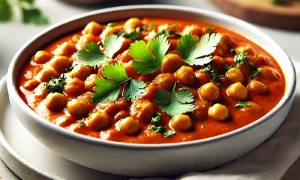Chicory Root Coffee: Foraging, Harvesting, Preparing, and Recipe

Chicory root coffee, also referred to as chicory tea is a delicious hot drink that closely resembles coffee. In fact, many people substitute coffee for chicory drinks.
If you’re not into foraging and still want to give this tasty drink a try, you can buy ground chicory root for coffee.
What Does Chicory Look Like? (Identifying Chicory)
We’ve probably all seen chicory, although many of us might not know it by name. It is the small periwinkle colored flowers lining the sides of country roads from mid-Summer into Autumn. These plants are rather unique and beautiful, so there aren’t too many other plants that this could be confused with.

Chicory Flowers
The flowers of chicory plants vary slightly.
- Color: Some are more blue and others more towards a purple. The middles have longer, darker stamens protruding from the center.
- Size: The flowers are round and about an inch to an inch and a half in diameter.
- Petals: They have many petals with serrated edge on the tips.
- These flowers grow from long, rigid stems offering many buds and blooms.
Chicory Plant Leaves
The leaves of chicory plants look similar to those of dandelions. They are long and leafy, staying near the base of the plants.
Roots
Chicory root, which is the part we will be using for this recipe, is a taproot – much like a carrot.
They are long and pointed, with smaller roots jutting out of the sides. Occasionally they will come in a cluster, meeting to a single point.
Can You Eat Chicory?
Yes, chicory is indeed edible. However, much like any other food, some people are more sensitive to chicory and have reported upset stomachs or other reactions. We recommend that if you do choose to try chicory, that you start small and make sure that you and your body enjoy it.
Edible Roots
The most commonly consumed part of the chicory plant is the root. It is a frequently added ingredient for various products as well as a great coffee substitute.
People often substitute coffee for roasted chicory drinks because it is naturally caffeine free, has a pleasing earthy taste, and contains several key nutrients.
The taste of roasted chicory root drinks is very similar to coffee, but it has an earthy, almost nutty flavor. With a touch of cinnamon it is delicious!

Edible Leaves
Chicory leaves are also edible and are frequently used in salads. They tend to become more bitter as the season progresses, so you may want to try to get to them earlier in the year!
Edible Flowers
Chicory flowers are edible, however, despite being beautiful, most people think they don’t taste all that great. They are rather bitter and don’t have much of a distinct flavor.
Harvesting Chicory Roots
Harvesting chicory roots can be simple or very challenging, depending on the soil you’re working with. These plants are rather versatile and can thrive in many areas.

Keep in mind that this is a taproot, so you’ll want to have a small hand shovel and dig deep before pulling. Once you’ve loosened up the surrounding soil, pull straight up from the base of the plant.
It’s essential to get as much of the root as you can, as this is the part you will be using. If the soil is very soft, you may be able to pull them by hand without a shovel, but it is not advised.
In the spirit of being waste-free, try to use the other parts of the chicory plant rather than discarding them. You can put the stems and flowers in a vase on the table, and use the leaves in a salad!
Chicory Root Coffee Recipe
Helpful Equipment
Ingredients
- 20 - 25 Chicory Roots (sizes vary)
- 1 tbsp. Ground Cinnamon
Instructions
Make the Dried Grounds
- Preheat the oven to 300°F
- Once you have your chicory roots harvested, thoroughly wash and scrub them with a vegetable brush.
- Using a potato peeler, peel as much of the root away as you can into thin shavings. The inner roots can be difficult to peel, so these can be chopped with a knife into small pieces.
- Rinse your peeled and chopped roots one more time in a strainer to remove any leftover dirt.
- Pat the pieces dry and spread them out into a single layer on a baking tray.
- Sprinkle ground cinnamon over the pieces. Feel free to use more or less cinnamon to your liking.
- Bake in the oven for 2 hours, until pieces are dried, brittle, and brown.
- Allow roasted chicory root to cool briefly.
- Using a mortar and pestle, grind the roasted roots into small granules. It is okay if there are some larger pieces. The inner roots have some parts that will not break down easily.
Making Coffee
- Scoop about 1 Tbsp. of the ground chicory root into a tea infuser for every cup of water used.
- Add chicory coffee to hot water and allow to steep for 2 to 3 minutes.
- Add sweetener to your liking and enjoy!
Notes & Tips
 Tip: Grinding the roasted chicory roots more into a powder will leave more grounds in the coffee. It is almost more like a matcha tea powder at that point. For less grounds or to avoid additional filtering, leave slightly larger granules.
Tip: Grinding the roasted chicory roots more into a powder will leave more grounds in the coffee. It is almost more like a matcha tea powder at that point. For less grounds or to avoid additional filtering, leave slightly larger granules. Nutrition
Health Benefits of Chicory Coffee
Chicory root is an excellent source of inulin, a type of fiber. This chicory root fiber is what it is most well known by in terms of nutrition. It also contains no caffeine and is low on calories. According to healthline.com, 60g of raw chicory root contains these nutrients:
Key Nutrients
- Calories: 44
- Protein: 0.8 g
- Carbs: 10.5 g
- Fat: 0.1 g
- Fiber: 0.9 g
Vitamins and Minerals
(percent of recommended daily intake)
- Manganese: 7%
- Vitamin B6: 7%
- Potassium: 5%
- Vitamin C: 5%
- Phosphorus: 4%
- Folate: 3%









